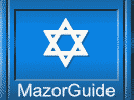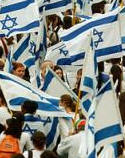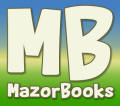|
|||||||||||||||||||||
|
Yom Yerushalayim "יום ירושלים" (Jerusalem Day) is celebrated every year on the 28th day of Iyar. The Chief Rabbinate of Israel declared Jerusalem Day a minor religious holiday to thank God for the victory of the six-day-war, and for answering the 2,000-year-old prayer of "Next Year in Jerusalem".
In May 12 1968 the Israeli government decided to 28th day of Iyar, Jerusalem Day, symbolizing the Jewish Nation’s historical connection to Jerusalem. 30 years later, on March 23, 1998 the Knesset passed the “Jerusalem Day Law”, officially determining the date that Jerusalem was liberated a national holiday. The Orthodox Jews differ in their ritualistic commemoration of this holiday. The religious Zionists recite special holiday prayers as instituted by the chief rabbinate, partake in celebratory meals, and don festive clothing. Some Haredi Jews do commemorate this day by making a pilgrimage to Jerusalem and/or learning special tractates and laws regarding Jerusalem. Some of the reasons that the Haredim do celebrate Yom Yerushalayim include: Yom Yerushalayim denotes the day that the Jews could finally gain access to the Western Wall; Yom Yerushalayim is celebrated after Lag B’omer, a day that marks the end of the Sfira (Sefirat HaOmer) mourning period, therefore there are no festive restrictions.
The Reform community in Israel adds Hallel on Yom Yerushalayim. In addition, liberal Jewish communities have festive celebrations and special programs focusing on Jerusalem. Some liberal Jews feel uncomfortable about celebrating the reunification of Jerusalem and complete Jewish sovereignty, due to the political conflicts with the Arabs. The religious Zionist community in Israel holds Yom Yerushalayim in higher regard than Yom HaAtzmaut, yet the non-Orthodox Diaspora Jewish community generally refrains from observing Yom Yerushalayim. This is probably due to a discomfort the politically liberal Jews feel about the status of Jerusalem, as the U.N. and the international community does not recognize the liberation and restoration of Jewish sovereignty over Jerusalem as valid. The observance of Yom Yerushalayim in the city proper by far surpasses any celebration outside its borders. Many Israelis make a pilgrimage to Jerusalem on that day. Thousands of people march around Jerusalem, walk through the liberated Old City, and enjoy the sites that were not accessible under Jordanian rule from 1948-1967. In addition to the parades multitude of lectures are offered around the city on Jerusalem-related topics, and many parties marked by joyous singing and dancing. Special television programming honor the day, and in schools, time is dedicated to studying about the city’s geography, history and its special significance in Jewish hope for messianic redemption.
The main ceremony commemorating Yom Yerushalayim is held in the “Ammunition Hill” "גבעת התחמושת" . This site which was declared a national memorial site in 1987, symbolizes the liberation and reunification of the Jerusalem. Originally, home to the Jordanian main post and a part of the borderline dividing Jerusalem since the 1948 partition, its seizure by Israeli soldiers, allowed for the eventual recapturing of the old city and the reunification of Jerusalem.  Mazor Guide to Yom Yerushalayim brings you much more about the holiday, its meaning and its traditions... See the links below.
MazorGuide Recommended Reading
-
A House of Prayer for All Nations: The Holy Temple of Jerusalem ~ by Chaim
Richman
|
|
|||||||||||||||||||
|
Mazor Guides: Wealth of Information and Resources Copyright 1998-2024 MazorNet, Inc. | http://www.MazorGuide.com | http://www.MazorBooks.com | http://www.Kosher-Directory.com | http://www.JewishCelebrations.com |
|||||||||||||||||||||









